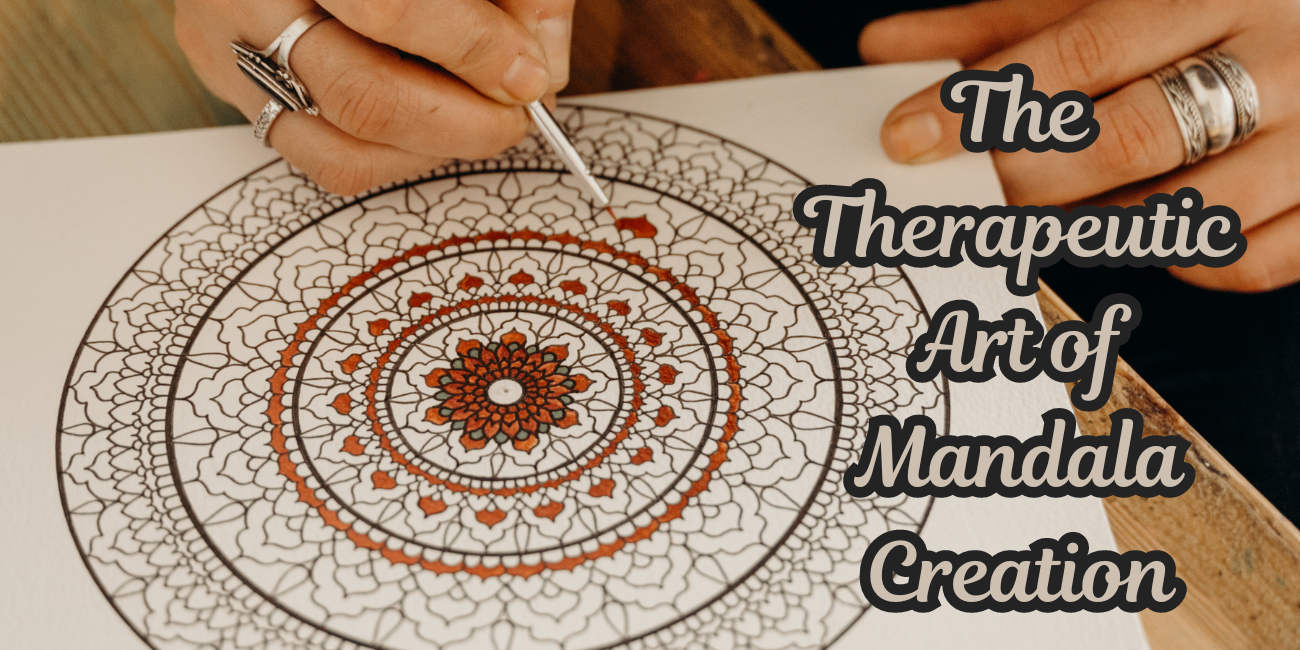
The Therapeutic Art of Mandala Creation: Finding Balance and Harmony Through Patterns
In a fast-paced world filled with constant distractions, many are seeking ways to find inner peace and balance. One such method that has transcended cultures and centuries is the creation of mandalas. These intricate, circular designs are not only visually captivating but also serve as powerful tools for meditation and self-discovery. In this blog, we'll delve into the therapeutic art of mandala creation, its history, significance, and how you can incorporate it into your wellness routine.
The Origins and Significance of Mandalas
Historical Roots:
The term "mandala" originates from the ancient Sanskrit language, meaning "circle" or "center." Mandalas have been integral to various spiritual traditions, including Hinduism and Buddhism, where they symbolize the universe and the interconnectedness of all life.
Tibetan Buddhist monks create intricate sand mandalas as a form of meditation, only to dismantle them upon completion, symbolizing the impermanence of life.
Universal Symbolism:
Beyond religious contexts, mandalas appear in nature (like snowflakes and flowers), architecture (such as rose windows in cathedrals), and even in modern psychology. Carl Jung, a renowned Swiss psychiatrist, explored mandalas as representations of the self, believing they facilitate personal growth and self-realization.
The Therapeutic Benefits of Creating Mandalas
Mindfulness and Meditation:
Engaging in mandala creation fosters a state of mindfulness. The repetitive patterns and focus required can lead to a meditative state, reducing stress and anxiety.
As you draw or color a mandala, notice how your breathing slows and your mind centers on the present moment. This act becomes a form of active meditation.
Enhancing Creativity:
Designing mandalas encourages creative expression. Without strict rules, individuals can experiment with colors, shapes, and patterns, making each mandala a unique reflection of their inner world.
Use a variety of mediums—from colored pencils to digital tools—to explore different textures and effects in your mandala creations.
Emotional Release and Healing:
The process can serve as an emotional outlet. Choosing colors and designs intuitively allows for the expression of feelings that might be hard to articulate verbally.
Someone experiencing grief might gravitate towards darker hues, while feelings of joy might inspire bright, vibrant colors.
Incorporating Mandala Creation into Daily Life
Starting Simple:
Begin with coloring pre-designed mandala templates. This practice can familiarize you with patterns and foster relaxation without the pressure of designing from scratch.
Designing Your Own:
Once comfortable, challenge yourself to create original mandalas. Start from the center and work outward, letting your intuition guide the patterns and shapes.
Don't strive for perfection. Embrace imperfections as part of the journey, reflecting the natural ebb and flow of life.
Sharing and Reflecting:
Join mandala workshops or online communities to share your creations. Discussing your experiences can deepen your understanding and appreciation of the practice.
Conclusion
The art of mandala creation is more than just drawing or coloring patterns; it's a journey inward, a path to understanding oneself, and a bridge to the present moment. Whether you're seeking a new hobby, a method to de-stress, or a spiritual practice, mandalas offer a versatile and enriching experience.
So, grab your tools, find a quiet space, and let the circles guide you to harmony and balance.
Stay updated and connected with Wainsy on social media:
Facebook: Follow us on Facebook
Instagram: Follow us on Instagram
YouTube: Subscribe to our YouTube channel
LinkedIn: Connect with us on LinkedIn